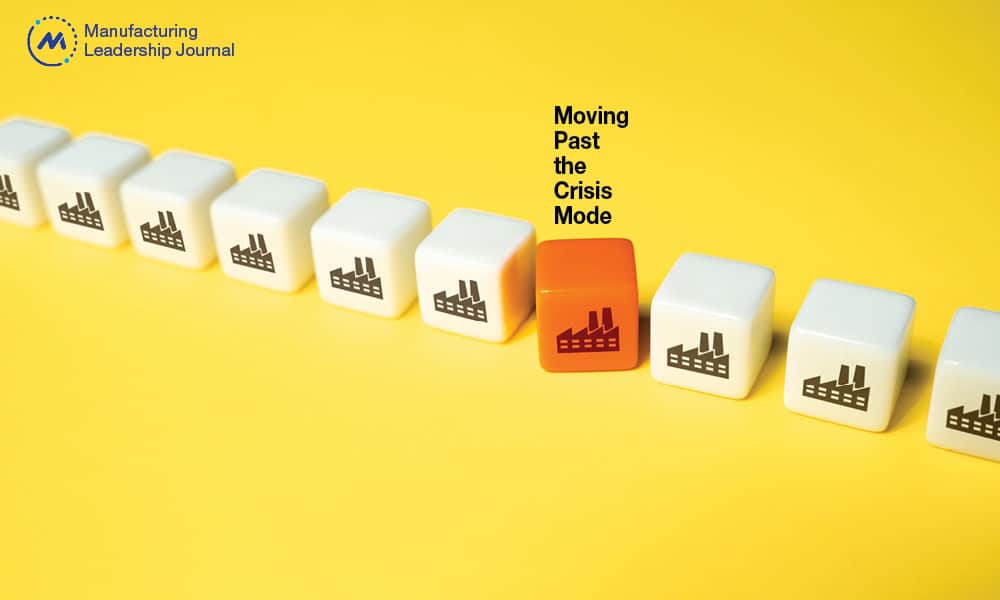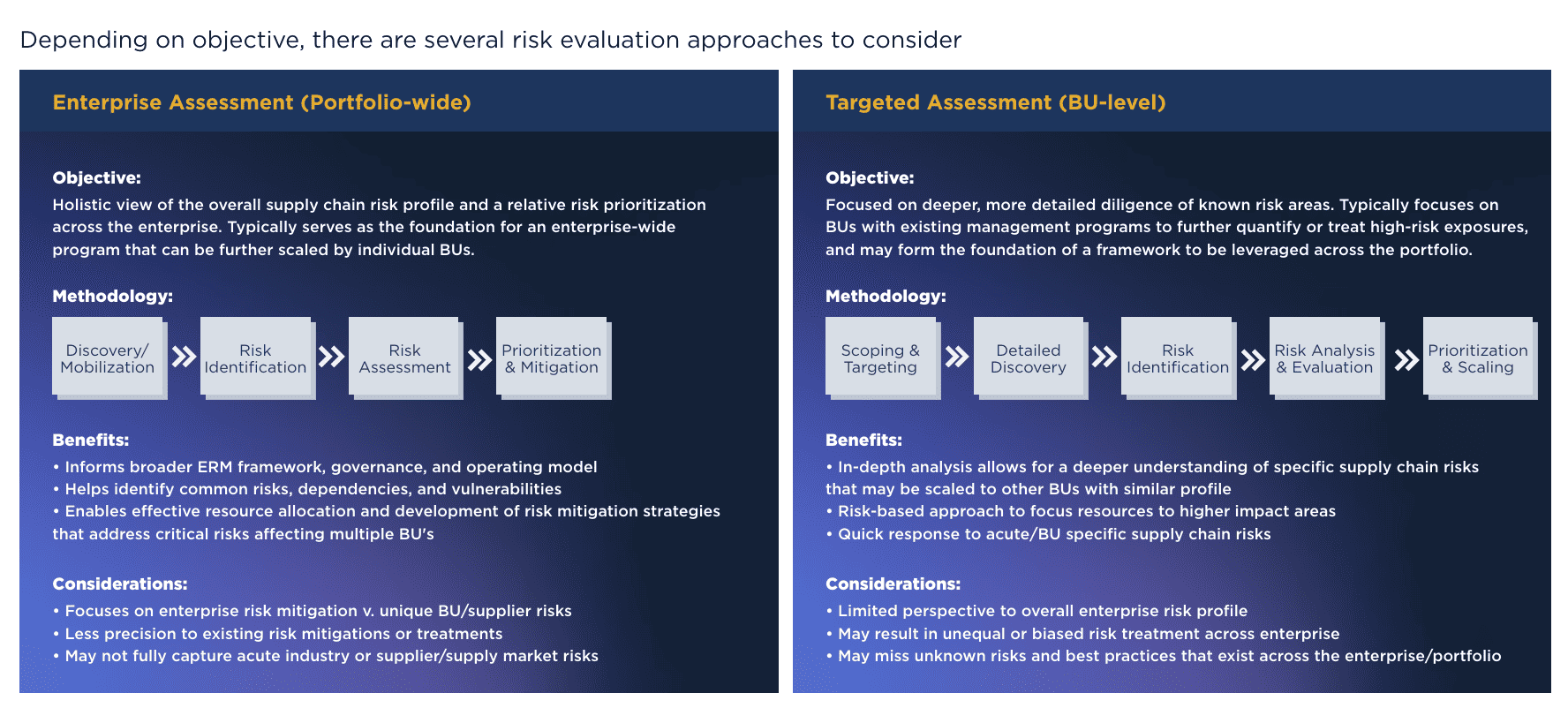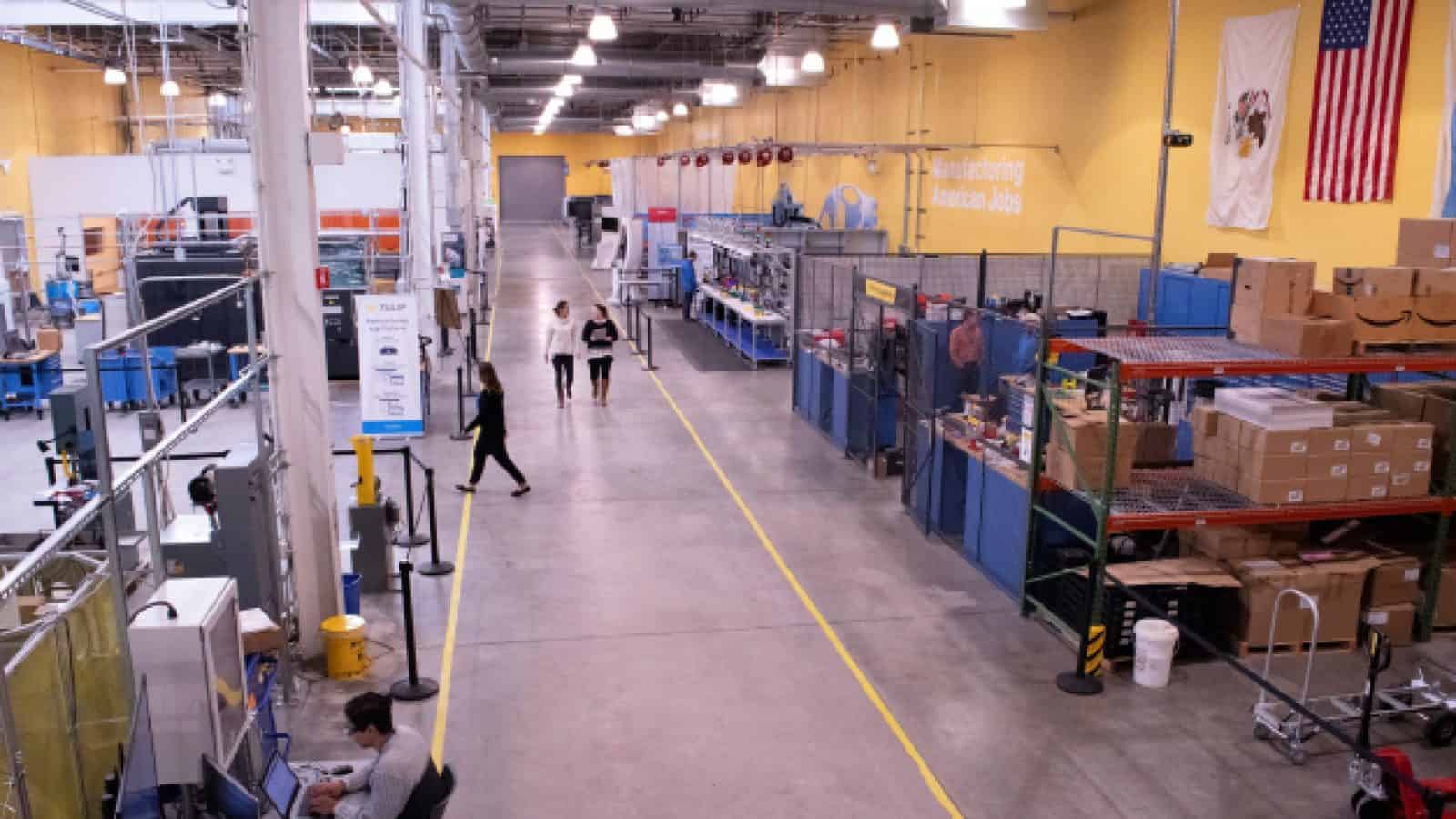Moving Past the Crisis Mode

With supply chains moving toward more normalcy, it’s time to refocus on supplier risk management.

TAKEAWAYS:
● Supplier risk management programs were often neglected or circumvented in the face of recent supply chain challenges.
● As normalcy returns, shoring up these processes requires a holistic internal and external approach.
● Advanced technologies like AI are essential to developing a robust SRM program.
In the NAM Manufacturers’ Second Quarter Outlook Survey (June 2023), workforce challenges continued to dominate and concerns about a weaker domestic economy grew. But responses also hinted at better news on the supply chain front — 45% of executives surveyed cited the supply chain as a primary challenge. That’s a significant percentage but also down from 56% the previous quarter. More than 25% of manufacturers believe supply chain disruptions have already abated or will in the current quarter, and 53% of manufacturers expect improvement by the end of 2023.
While there’s still plenty of uncertainty, this sentiment suggests movement in the direction of “normalcy.” As that happens, we believe that it’s critical to revisit and reinvigorate supplier risk management (SRM) programs.
Given the extraordinary events of the past several years, it’s understandable that many manufacturers eased up on supplier risk management to ensure they could get what they needed to meet demand. Discipline waned on the buy side of the supply chain, with buyers often relaxing their practices for holding suppliers accountable to contract terms and enforcing penalties for non-compliance.
The pendulum is swinging the other way as supply conditions stabilize. Many manufacturers are beginning to again tighten and strengthen their SRM processes. Listed below are some considerations to accomplish that.
Six Considerations for Strengthening Your SRM Program
While technology is a key enabler of supplier risk management today, effectiveness depends on having a more well-rounded approach. Without that, you will struggle to realize value from the effort.
1. Start within your own house: There are multiple functions and parties involved in getting materials from suppliers into your plant. To be effective and ensure consistent application across functions, an SRM program must have multidisciplinary input and consensus. Having your own internal operations in order is essential before you can begin engaging suppliers in initiatives to improve visibility or collaboration.
2. Segment the supplier base: One of the most important principles of SRM is the application of segmentation to suppliers and supply markets; not all provide the same value to the organization or pose the same level of risk. Effective segmentation enables manufacturers to focus their efforts on strategic suppliers at the top of the pyramid that may provide enormous potential for partnership and collaboration. Expanding interfaces with certain strategic suppliers enables collaborative planning and forecasting, and it also improves both organizations’ efficiency.
But the potential is even greater. Collaborative R&D and innovation and joint market development initiatives can be a “force multiplier” for both parties. What’s more, the benefits of expanding strategic perspective further up and down the value chain can provide strategic risk management advantages, including earlier identification of both downside risks and upside opportunities.
3. Assess risk regularly, using a proven framework: Many organizations significantly expanded their supplier base during the pandemic to manage disruptions. This resulted in many short-term partnerships and non-optimal agreements. With a return to normal, a good SRM practice is evaluating the strategy behind each relationship, including updating service level agreements, pricing/service benchmarks, and volume commitments — not as a one-time initiative but on a regular ongoing basis.

“Having your own internal operations in order is essential before you can begin engaging suppliers in initiatives to improve visibility or collaboration.”
Organizations with new or less advanced SRM initiatives should consider starting with an enterprise-wide assessment that creates a holistic view of the supply chain risk profile to prioritize risks across the enterprise. This, then, provides the foundation for building an SRM program focused on areas of greatest risk. On the other hand, organizations with established SRM programs or with insight into known risks may take a “risk-based” approach, focusing diligence in those areas. This more in-depth analysis allows for deeper understanding of specific supply chain risks that may extend to other parts of the business with a similar profile. But because of its narrower focus, it may miss unknown risks or SRM best practices that already exist in the organization.

4. Elevate master data management: Quality and availability of data is the lifeblood of supplier risk management and the enhanced collaboration, efficiency, and performance it promises. Manufacturers that “digitize to the core” not only have the potential to become much more efficient and dynamic within but also gain the opportunity to expand competitive advantage at the “edge” by integrating with digitally enabled suppliers, vendors, and third parties. The ability to jointly transact, communicate, innovate, and create digital twin models aids in managing supply risk.
Capitalizing on this requires sound management of the data that may be highly sensitive or proprietary:
- Operational/Master data: products, parts, specifications, bills of materials, capacities, etc.
- Transactional data: orders, forecasts, lead times, payments, invoices, shipments, sales/point-of-sale, inventory, etc.
- Performance data: service levels, quality, Net Promoter® scores, etc.
Elevating master data management is next to impossible without moving away from Microsoft Excel and paper-based processes. This is where many manufacturing operations struggle. In our research with Supply Chain Dive, nearly 75% of manufacturing and distribution executives said they primarily use Excel in their sales and operations planning processes. This is not just slower and more laborious, it’s also more prone to errors and risks.
5. Mature data acumen and governance, wherever it resides in the company: In a digitally enhanced organization, people must be agile and capable of operating at two speeds: running the business while continuously exploring ways to use data to find, evaluate, and pursue new opportunities. This requires the ability to understand new risks from data sharing and systems integration, and to apply risk-based approaches to evaluating what is shared, protocols for sharing, and lines of defense to protect and remediate when needed.
Employees can no longer operate solely within their own functional siloes. They must have a baseline understanding of the data governance frameworks, protocols, and underlying data risks as they increasingly engage with digital interfaces within supplier ecosystems. This will require new skills, as well as education and change management across the functions that play roles in managing supplier risk.
6. Take advantage of evolving technology: Good visibility is key to managing supply risk. Visibility is the product of being digital. Leading manufacturers are trending toward more technology-enabled planning processes. This allows them to forecast more accurately and look further into the future. In addition to having better insight, digital organizations can do more with the same number of people.
Software companies are utilizing advanced technologies to transform supply chain risk management. They offer platforms that provide in-depth supplier risk assessments — which are customizable and dynamic — covering a wide range of risk categories. These assessments focus on various aspects, including location, company, and material risks, and are designed to build long-term resiliency by reducing the frequency and impact of events that can affect supply chains.
Artificial intelligence is revolutionizing supplier risk management by leveraging predictive analytics to foresee potential supply chain disruptions, considering myriad data points including geopolitical events, weather patterns, and suppliers’ financial health. It facilitates real-time monitoring of supply chain processes, tracking goods in transit, and monitoring supplier performance to detect and alert about anomalies before they escalate into significant issues.

“Expanding interfaces with strategic suppliers enables collaborative planning and forecasting, and it also improves both organizations’ efficiency. ”
AI also enhances supplier evaluation, sifting through data on performance, financial stability, and regulatory compliance to identify high-risk suppliers. By classifying suppliers based on their risk levels, AI aids organizations in prioritizing their risk management efforts towards suppliers who pose the most significant threat. AI also supports scenario planning by creating predictive models and running what-if scenarios, enabling organizations to understand the potential impact of different risks and plan their responses accordingly.
Some software solutions employ natural-language AI models trained on supply-chain data to modernize assessment and monitoring processes. These models help to anticipate and manage disruptions in supply chains more effectively. There are also AI-powered analytics engines that integrate data from numerous sources to predict supply chain disruptions or delays. From the inception of a purchase order, these engines provide predictive risk scores to inform buyers about potential supplier delays and their reasons.
Software solutions also exist that focus on risk due diligence in the source-to-pay process, aiming to mitigate disruption while safeguarding revenue and reputation. These tools are designed to automate all aspects of supplier performance and information management, scanning millions of online sources and providing risk alerts. Some solutions also offer comprehensive 360-degree supplier performance and risk management capabilities. Finally, there are software solutions that use AI to help organizations identify, analyze, and mitigate all types of supply chain risks. These comprehensive solutions streamline and automate the often complex and multifaceted process of supply chain risk management.
Key considerations for evaluating the use of new technology include:
- Data quality and availability
- Integration with existing systems
- Regulatory compliance
- Vendor capabilities and support
- Cost and return on investment
- Training and change management required
- Security
- Scalability to meet needs across the business
Taking Action
The right steps to take will, of course, depend on your operations and supply chain, and the maturity of existing SRM practices. Generally speaking, organization size and scale may be one guide for determining where to focus.
Because data is a critical foundation for supplier risk management, not to mention supply chain performance, building the fundamentals for becoming data-driven should be a top priority, particularly for smaller to mid-sized organizations that are early in the process of formalizing an SRM approach.

“By classifying suppliers based on their risk levels, AI aids organizations in prioritizing their risk management efforts towards suppliers who pose the most significant threat.”
Meanwhile, middle- to upper-middle-market manufacturers are typically at a size and scope of operations where a holistic view of the supply chain really starts to matter. In this category, SRM strategies are more common but tend to fall apart when an organization is missing one leg of the stool, whether it’s people and skills, data, technology, or processes. It’s important, then, to make sure the right foundation is in place. Additionally, organizations should look for opportunities to advance tried-and-true approaches, such as supply market segmentation or data sharing and collaboration with strategic suppliers. Pilot programs can be effective for testing and learning from new approaches.
Larger global organizations with established SRM strategies should make sure they are tightening the screws and driving supply-side operations excellence by reinvigorating programs that may have atrophied because of the conditions of the past few years. These organizations can also look for opportunities to modernize technology and begin taking advantage of the latest AI and other capabilities.
Wherever your organization falls on the spectrum, recognize that shoring up SRM practices takes effort, investment, and time to see impact. Simply put, it’s important to act now. While the supply chain may be moving toward more “normalcy,” instability continues to permeate the market. Having a firm handle on supply risk and managing it effectively is critical to future growth and competitive advantage. M
About the authors:

Sam Dawes is a Partner in the Consumer & Industrial Products practice at West Monroe

Brian Pacula is a Partner in the Operations Excellence practice at West Monroe

Alex Jay is a Senior Manager in the Consumer & Industrial Products practice at West Monroe

Brandon Cosey is a Senior Manager in the Operations Excellence practice at West Monroe

David McGraw is a Senior Manager in the Consumer & Industrial Products practice at West Monroe

Marcus Spranger is a Senior Manager in the Operations Excellence practice at West Monroe
